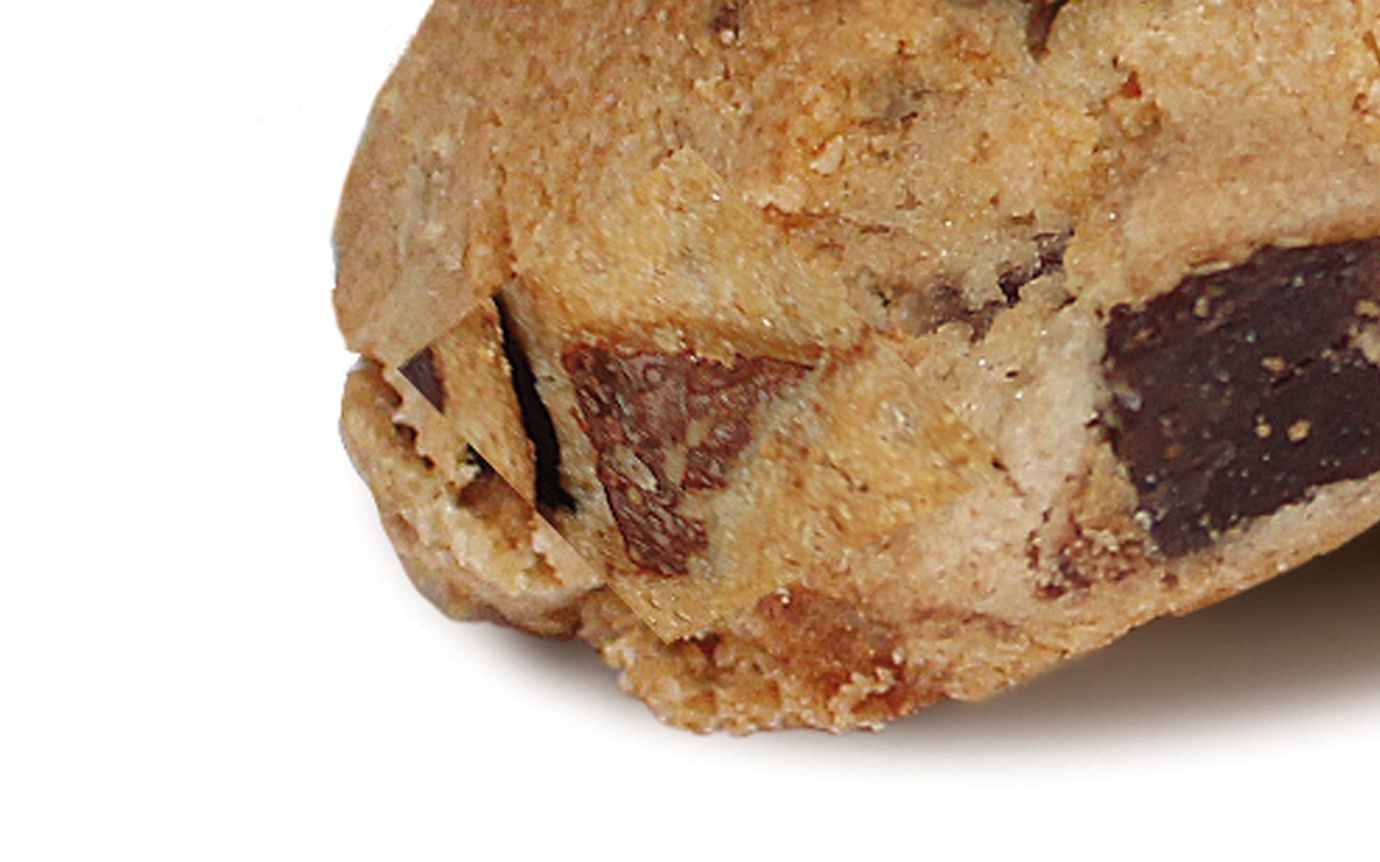Artwork Intel

You might not have given much thought to your branding's artwork. Whether it’s some kind of sign, a brochure, or a piece of packaging, you probably thought someone just flicks off the design that you approved to the printers, and it’s all straightforward.
Sadly, it’s not straightforward at all.
Ben Dean, our head of production, works on files for print (’artwork’) all day, every day. He’s seen it all.
Like the biscuit image above that a client brought in to us on a hunch that her artwork could be better. You can see the Before and After of Ben’s retouching above. Even more interesting is the close up of the left-hand side of the Before below. That’s a particularly sloppy piece of retouching. Too bad if you wanted to use your biccie image later, up large on a billboard!
Below are some tips from Ben. Call it your ‘artwork intel’. It might save you a lot of money some day.
Tip #1
Retouching trumps photography.
Good retouching can achieve more than is possible by any photographer. So any time you commission or buy a photo, you should also allow extra time and budget for retouching. It will not only enhance and optimise the photo, and set it up right for your printer, but you can create stuff that didn’t exist before - like clear skin (human or vegetal!); sauce where there wasn’t sauce before; or more chocolate in your biccie (not saying that happened in the example above, mind).
Tip #2
There are printers and then there are printers.
Your printer may be offering you any number of print processes - from digital, to offset, dry offset, flexo, letterpress or in-mould labelling, to name a few.
Each type of print process requires your artwork files to be set up
differently. Same design, but different artwork.
But what’s more, different printers using the same process will also potentially require different artwork setups.
Moral of the story: Don’t even start making your artwork files without a consultation with the person who will be printing them.
Tip #3
Some of the things to watch out for
Your printer and their print process will dictate what’s required for your artwork, so your first job is to understand any restrictions that these things could impose on your final result.
They could include:
A limited or alternative colour breakdown
There may be a minimum line weight
There may be a minimum font size
Trapping and/or overprinting may be required
There may be a margin of misregistration that is unavoidable
Covering off these things before you create your artwork will help avoid a bad result.
And disappointment.
Tip #4
Substandard artwork is expensive
If your artwork is not set up correctly, the files will need to be done again and resupplied to the printer. That’s one expense doubled.
If the job has already been printed, you are looking at the cost of your artwork again (+ retouching), and the price of the reprint. That’s not a result that will make your accountant smile.
So remember, artwork is not straightforward, and a patchy approach never serves your business well. But artwork most definitely has the potential to do your business proud.
Close up Before: The ‘patch’ up job
